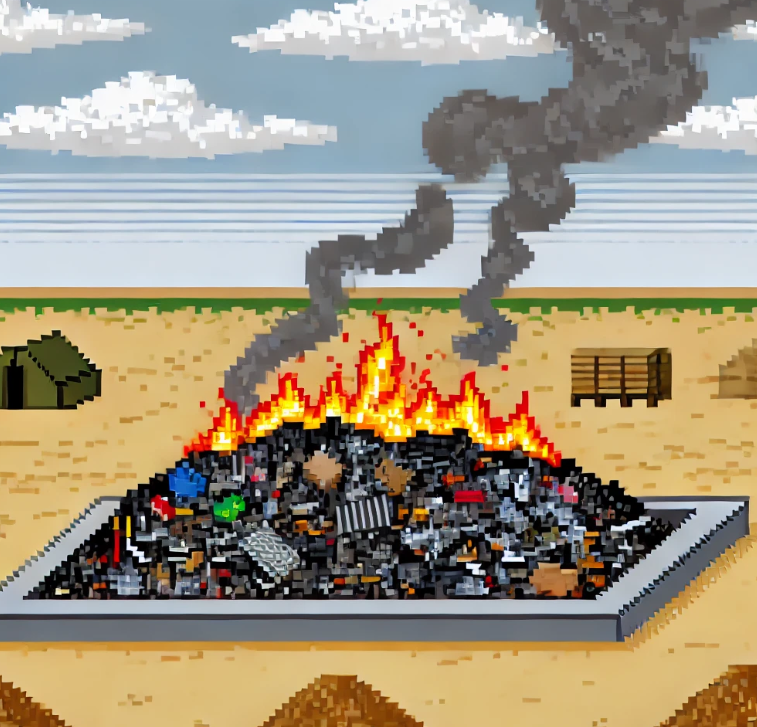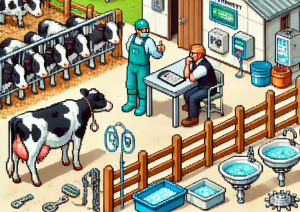
The Dangers of Military Burn Pits
When we think of soldiers serving in conflict zones, the immediate dangers that come to mind are often bullets and bombs. However, a less visible but equally insidious threat lurks in the very air they breathe. Military burn pits, used extensively in the Middle East and Southeast Asia, have been identified as a significant health hazard for both military personnel and local civilians. This blog will explore the fascinating and concerning findings of recent research into the toxic exposures from these burn pits, highlighting why this issue demands our attention.
The Problem with Burn Pits
Military burn pits are large, open-air waste disposal sites where everything from human waste and medical supplies to plastics and metals are burned. The result? A toxic cocktail of pollutants, including particulate matter, volatile organic compounds, and hazardous chemicals like dioxins and benzene. These pollutants are released into the air, creating clouds of harmful smoke that soldiers and civilians inevitably inhale.
The immediate concern is the range of health problems linked to these emissions. From respiratory diseases to neurological deficits, the spectrum of potential pathologies is broad and troubling. Yet, despite the serious health risks, limited research has been specifically focused on the long-term effects of burn pit exposure.
Unpacking the Science
The recent study delved into existing literature and conducted new investigations to understand the impact of burn pit emissions. Researchers used databases like PubMed and Google Scholar to review available information and identify gaps in current knowledge. (yup, that’s one of my favorite strategies, too)
One of the key findings is the lack of chronic exposure studies. While acute exposure studies are somewhat common, they do not provide a complete picture of the long-term health effects. The review highlighted a range of symptoms, from respiratory issues like chronic obstructive pulmonary disease (COPD) to neurological problems such as memory deficits and headaches. However, establishing a direct causal link between these symptoms and burn pit exposure remains challenging without comprehensive long-term studies.
Respiratory Risks
Respiratory issues are among the most immediate and noticeable effects of burn pit exposure. The smoke contains fine particulate matter (PM2.5 and PM10) that can penetrate deep into the lungs, causing inflammation and exacerbating conditions like asthma and COPD. Studies have shown that individuals exposed to burn pit emissions report higher instances of respiratory symptoms and diseases.
For instance, veterans registered with the Airborne Hazards and Open Burn Pit Registry have reported a range of respiratory issues, including chronic bronchitis and emphysema. These conditions are often found in those who were stationed near burn pits for extended periods, indicating a likely correlation between exposure and disease.
Neurological Concerns
Beyond respiratory issues, burn pit exposure has been linked to various neurological problems. Research indicates that exposure to the toxic compounds in burn pit smoke can lead to symptoms such as headaches, dizziness, and cognitive deficits. In some cases, more severe conditions like brain cancer have been reported among those with prolonged exposure.
The mechanisms behind these neurological effects are still being studied, but the pollutants from burn pits can cross into the brain, potentially leading to long-term damage. The study underscores the need for more detailed research to fully understand these effects and develop appropriate interventions.
The Need for Chronic Exposure Studies
One of the major gaps in current research is the lack of chronic exposure studies. While short-term studies provide some insights, they cannot capture the full extent of health problems that develop over years of exposure. The review calls for more comprehensive studies that mimic the long-term exposure experienced by soldiers and civilians.
Animal studies, particularly those involving rodents, have shown promising results in understanding the effects of burn pit emissions. These studies expose animals to controlled doses of burn pit smoke over extended periods, helping researchers observe the development of diseases and identify potential treatments. However, translating these findings to humans requires careful consideration and further research.
The Path Forward
Addressing the health impacts of burn pit exposure is not just a matter of scientific curiosity; it is a public health imperative. Veterans and civilians exposed to these toxic environments deserve accurate diagnoses and effective treatments. This requires a concerted effort from researchers, healthcare providers, and policymakers to prioritize this issue.
In the meantime, affected individuals must seek medical attention and report their symptoms to relevant health registries. Early diagnosis and intervention can significantly improve the management of the health effects of burn pit exposure.
Join the Conversation
As we continue to explore the hidden dangers of burn pits, we invite you to share your thoughts and experiences.
- Have you or someone you know been affected by burn pit exposure? What symptoms or health issues have you noticed?
- What steps do you think should be taken to better understand and address the health impacts of burn pits?
Your insights can help raise awareness and drive further research into this critical issue. Share your thoughts in the comments below or join the conversation on social media.
Conclusion
The toxic legacy of military burn pits is a pressing issue that demands our attention. While research has made strides in identifying the risks, much remains to be done to fully understand and mitigate the health impacts of burn pit exposure. By prioritizing long-term studies and supporting affected individuals, we can work towards a future where the invisible dangers of war are better understood and addressed.
Be Part of the Change – Get Weekly Updates!
Stay informed and connected. Subscribe for free and share this blog to make a difference in public health with others.



